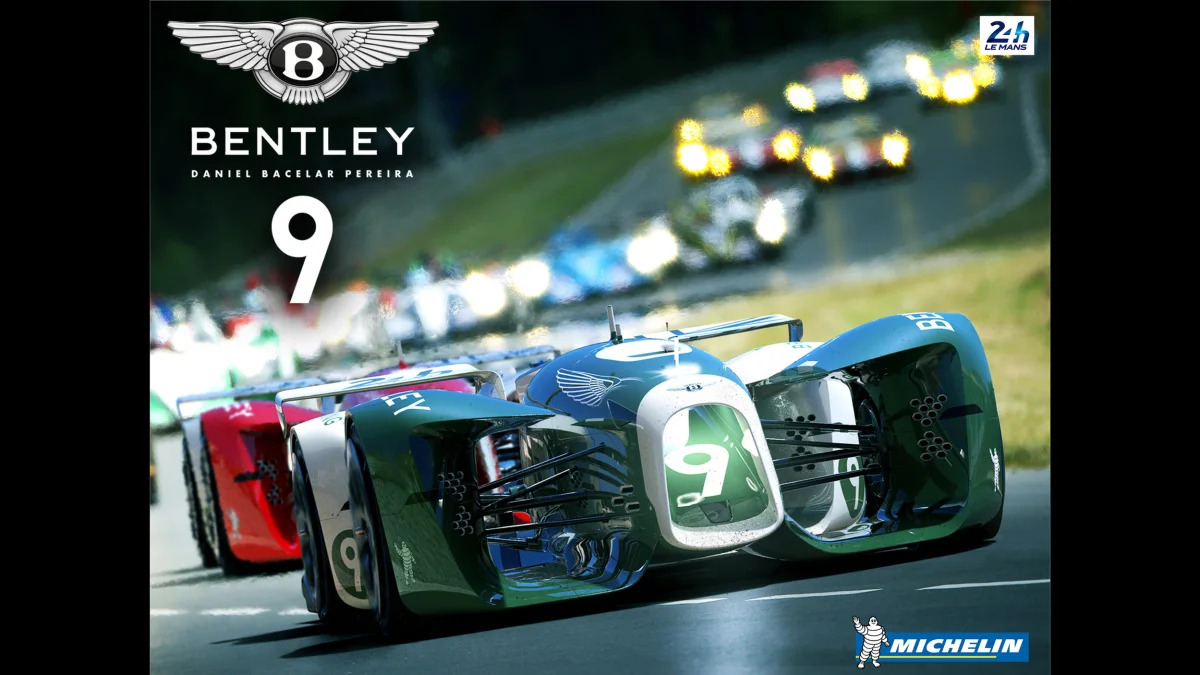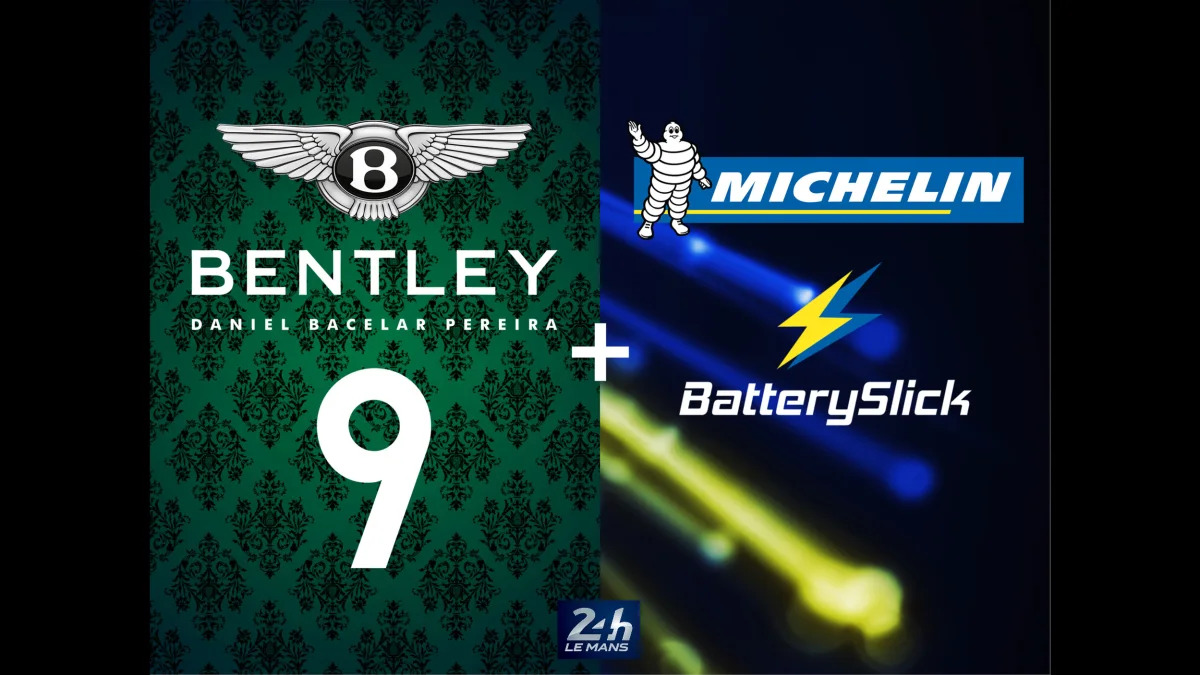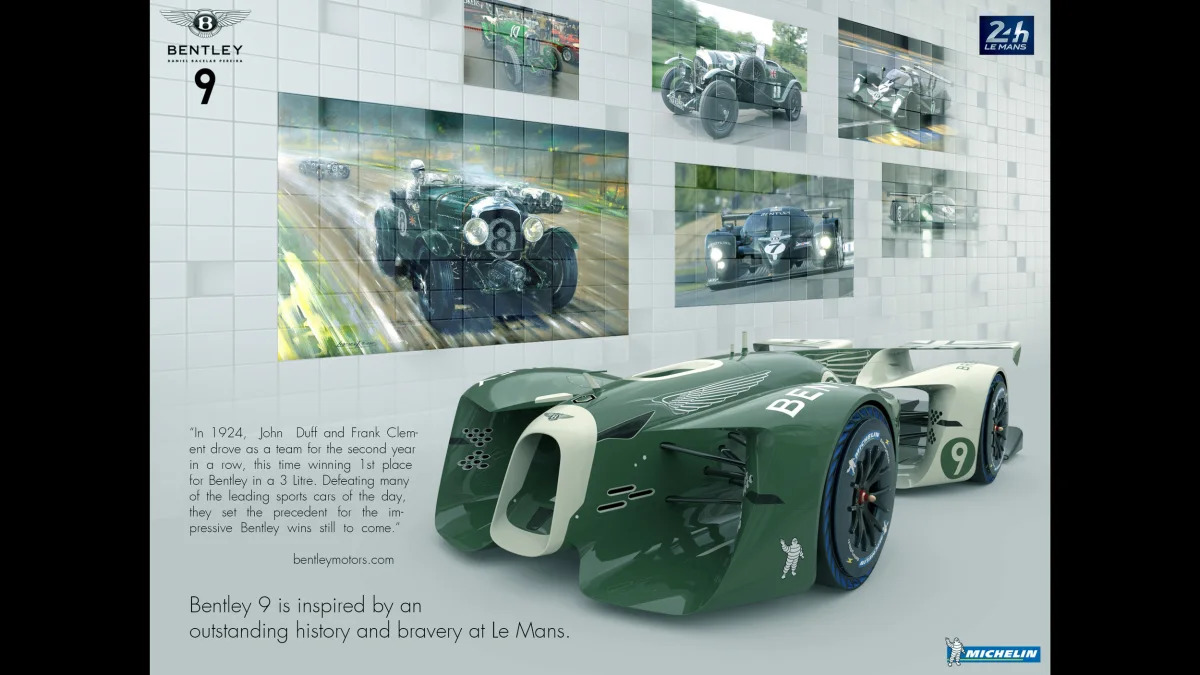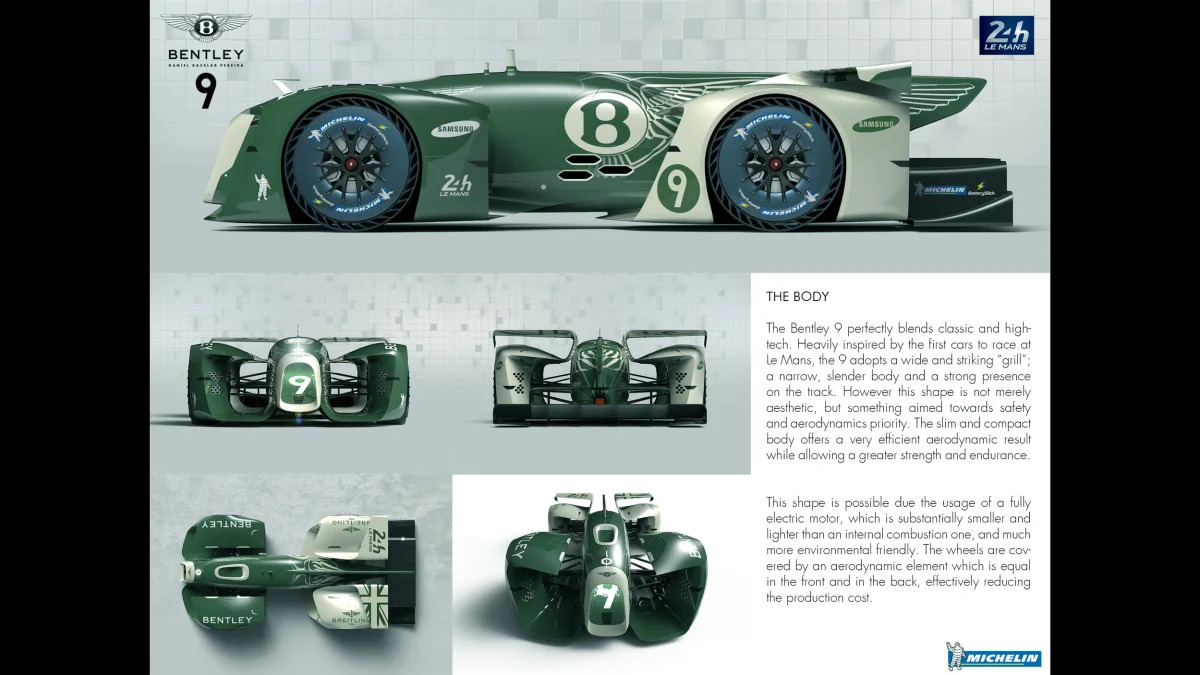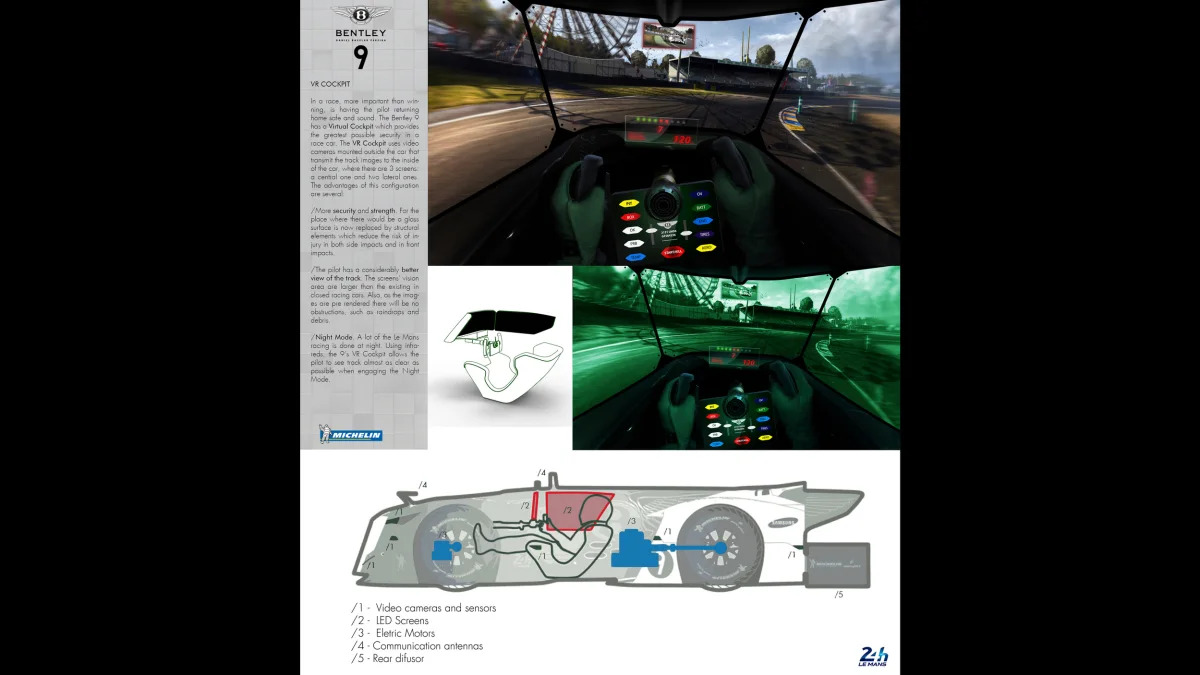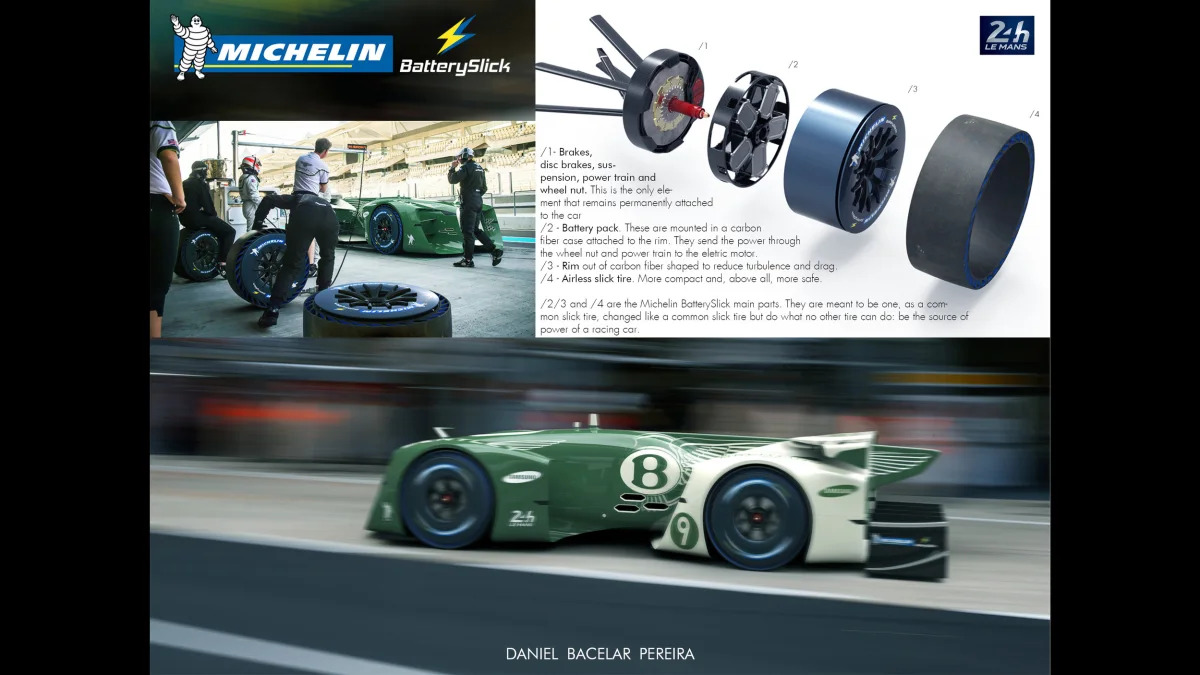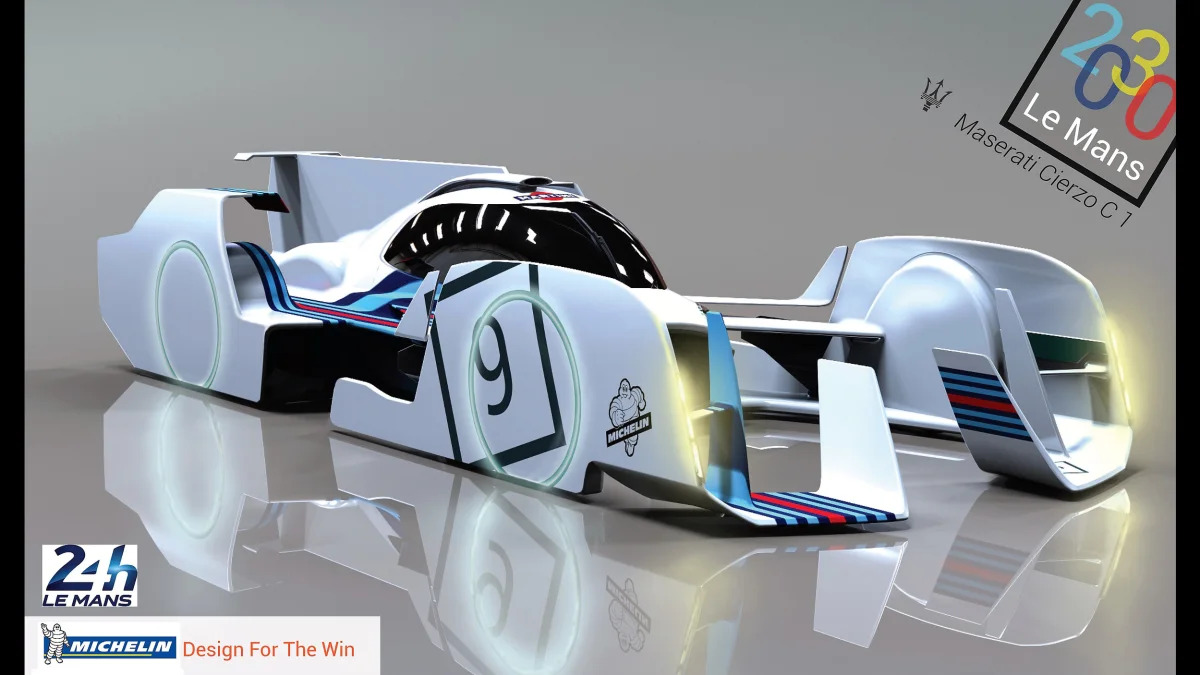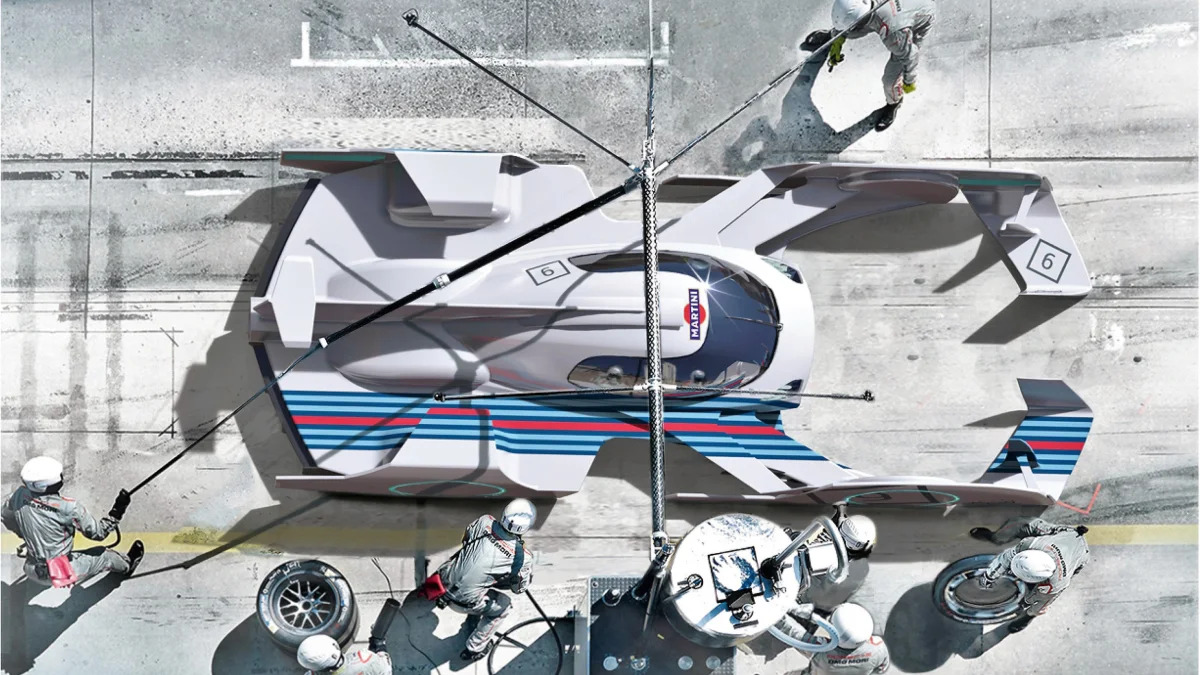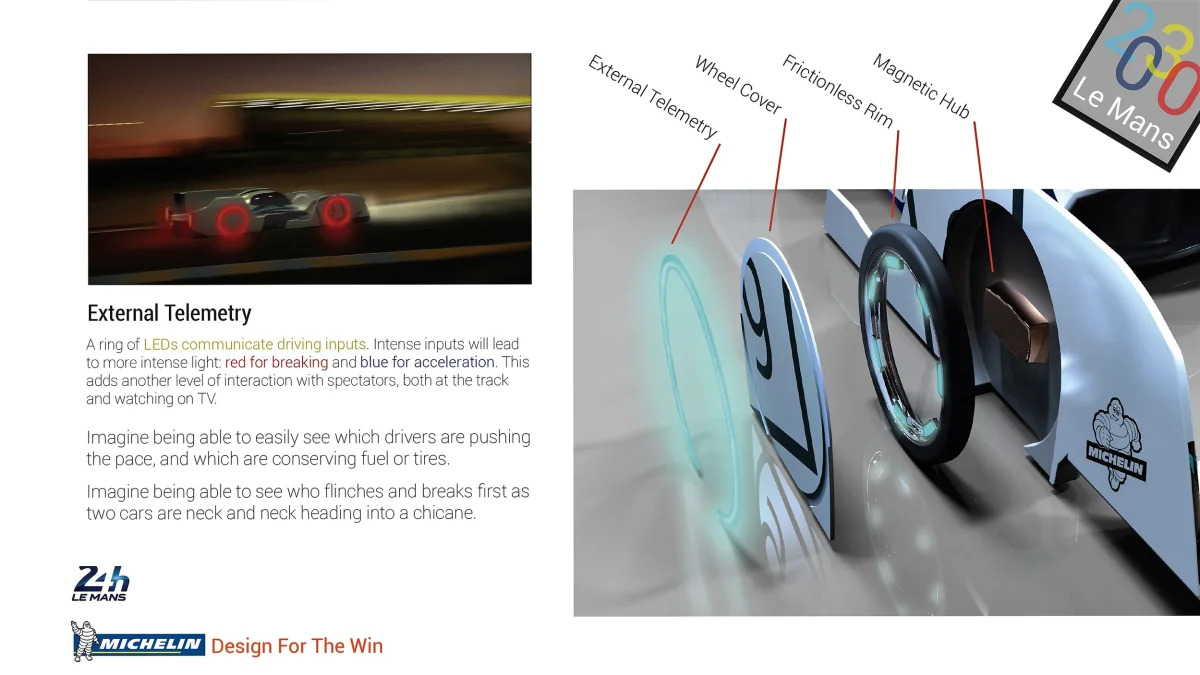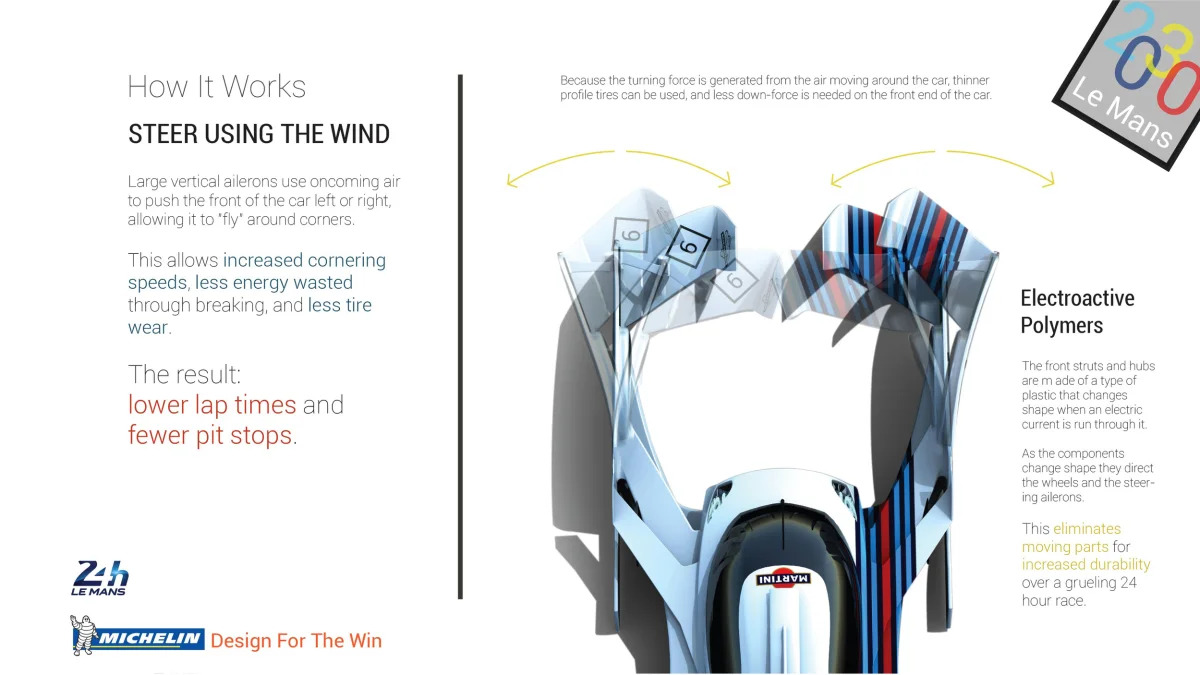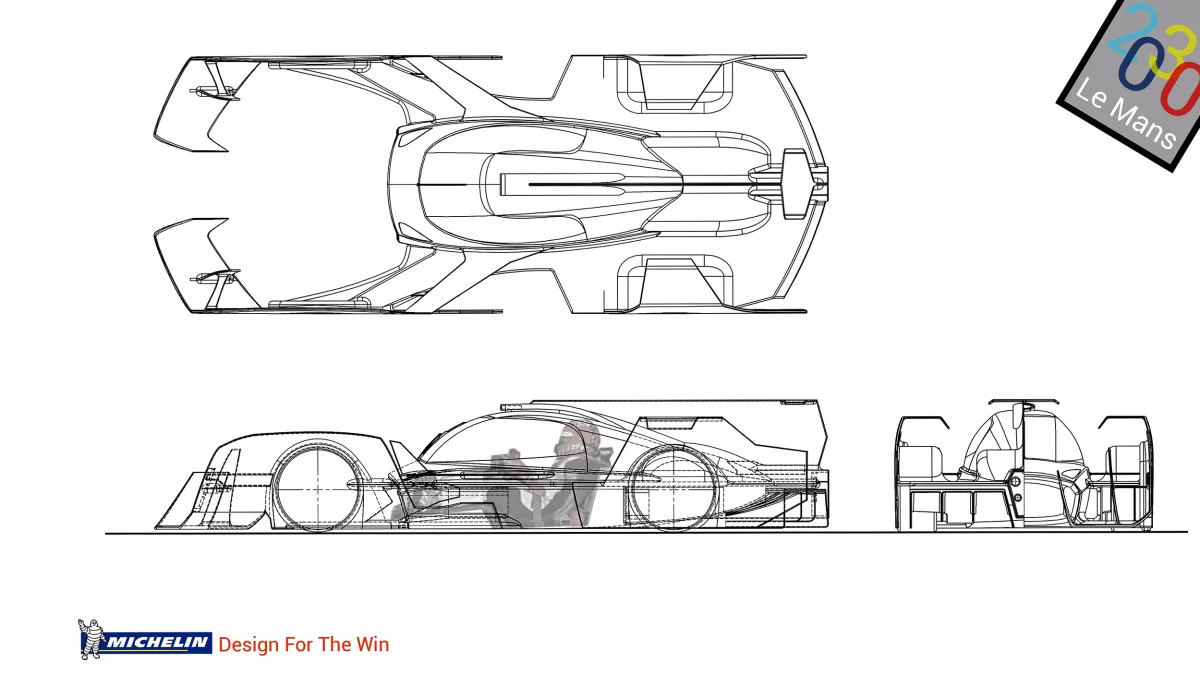2017 Michelin Design Challenge winners imagine the Le Mans racers of 2030
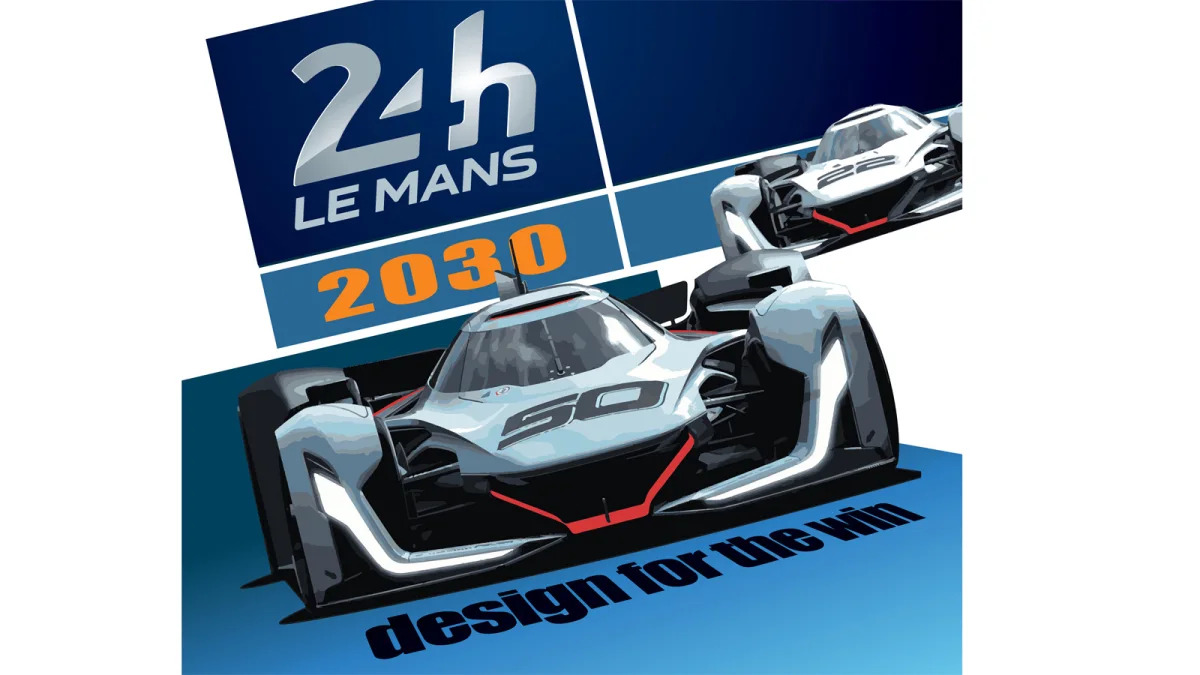
-

- Image Credit: Michelin
Le Mans 2030: Design for the Win
For this year's Michelin Design Challenge, participants were asked to envision what the Le Mans car of 2030 would be like. Michelin received 1,600 entries from 80 countries, all of which had quality Thom Roach, Michelin North America's VP of original-equipment marketing, described as "truly outstanding."
Still, judges from Michelin, Groupe Zebra, and major OEMs including BMW, Ford, GM, Honda, Hyundai, Nissan, and PSA Peugeot Citroen managed to pick a winner and two runners-up. Those designs are on display here for your viewing pleasure.
The winners will also be guests of Michelin at the North American International Auto Show where they will be recognized and given private portfolio reviews. The first-place winner will also be recognized at the 2017 24 Hours of Le Mans.
-
- Image Credit: Michelin
1st Place: Infiniti Le Mans 2030 by Tao Ni
Tao Ni, a designer from Wuhu, China, took home first place for his Infiniti Le Mans 2030. The car reflects his desire to see humans and technology support and complement each other. To that end, the car uses a combination of human piloting and autonomous driving. His suggestion is that the human driver would drive during the day, while the auto-pilot takes over at night. The car would certainly open up some interesting opportunities to see smaller driver teams and strategic use of the auto-pilot. -
- Image Credit: Michelin
1st Place: Infiniti Le Mans 2030 by Tao Ni
-
- Image Credit: Michelin
1st Place: Infiniti Le Mans 2030 by Tao Ni
-
- Image Credit: Michelin
1st Place: Infiniti Le Mans 2030 by Tao Ni
-
- Image Credit: Michelin
2nd Place: Bentley 9 Plus Michelin Battery Slick by Daniel Bacelar Pereira
The second place design comes from Daniel Bacelar Pereira from Vila Real, Portugal. Pereira has been interested in cars since he was 15, and his Bentley 9 Plus Battery Slick features a clever solution for electric racing. In order to avoid long charging times over the course of 24 hours, the batteries are integrated into the wheels and tires. This way, when the car comes in for new tires, it leaves with freshly charged batteries. One drawback we see is that the unsprung weight of these battery wheels would be enormous. -
- Image Credit: Michelin
2nd Place: Bentley 9 Plus Michelin Battery Slick by Daniel Bacelar Pereira
-
- Image Credit: Michelin
2nd Place: Bentley 9 Plus Michelin Battery Slick by Daniel Bacelar Pereira
-
- Image Credit: Michelin
2nd Place: Bentley 9 Plus Michelin Battery Slick by Daniel Bacelar Pereira
-
- Image Credit: Michelin
2nd Place: Bentley 9 Plus Michelin Battery Slick by Daniel Bacelar Pereira
-
- Image Credit: Michelin
2nd Place: Bentley 9 Plus Michelin Battery Slick by Daniel Bacelar Pereira
-
- Image Credit: Michelin
2nd Place: Bentley 9 Plus Michelin Battery Slick by Daniel Bacelar Pereira
-
- Image Credit: Michelin
2nd Place: Bentley 9 Plus Michelin Battery Slick by Daniel Bacelar Pereira
-
- Image Credit: Michelin
3rd Place: Cierzo C1 by Kurt Scanlan
Coming in third place is the Cierzo C1, designed by Kurt Scanlan of Toronto, Canada. Scanlan went to school for psychology, but realized he enjoyed design more, so returned for a degree in industrial design. The key design point of his car is the steering, which is done by moving vertical ailerons and using air to change course. It also relies on plastic components that change shape with electricity, rather than multi-piece components. The body features an LED panel that illustrates throttle and braking inputs so spectators can see what's happening. We imagine it could also give drivers some useful insight into their competitors' strategies. -
- Image Credit: Michelin
3rd Place: Cierzo C1 by Kurt Scanlan
-
- Image Credit: Michelin
3rd Place: Cierzo C1 by Kurt Scanlan
-
- Image Credit: Michelin
3rd Place: Cierzo C1 by Kurt Scanlan
-
- Image Credit: Michelin
3rd Place: Cierzo C1 by Kurt Scanlan
-
- Image Credit: Michelin
3rd Place: Cierzo C1 by Kurt Scanlan
-
- Image Credit: Michelin
3rd Place: Cierzo C1 by Kurt Scanlan




